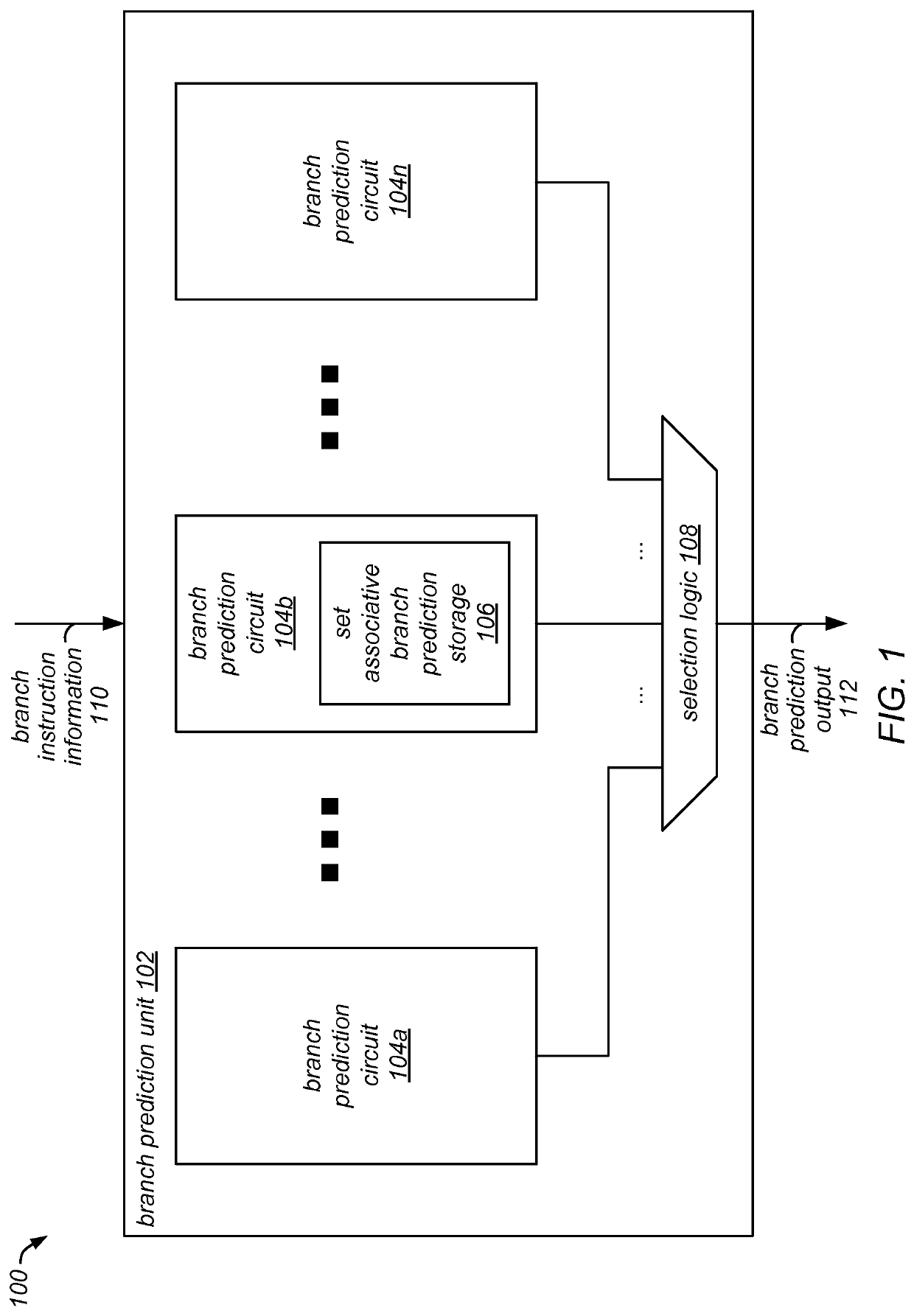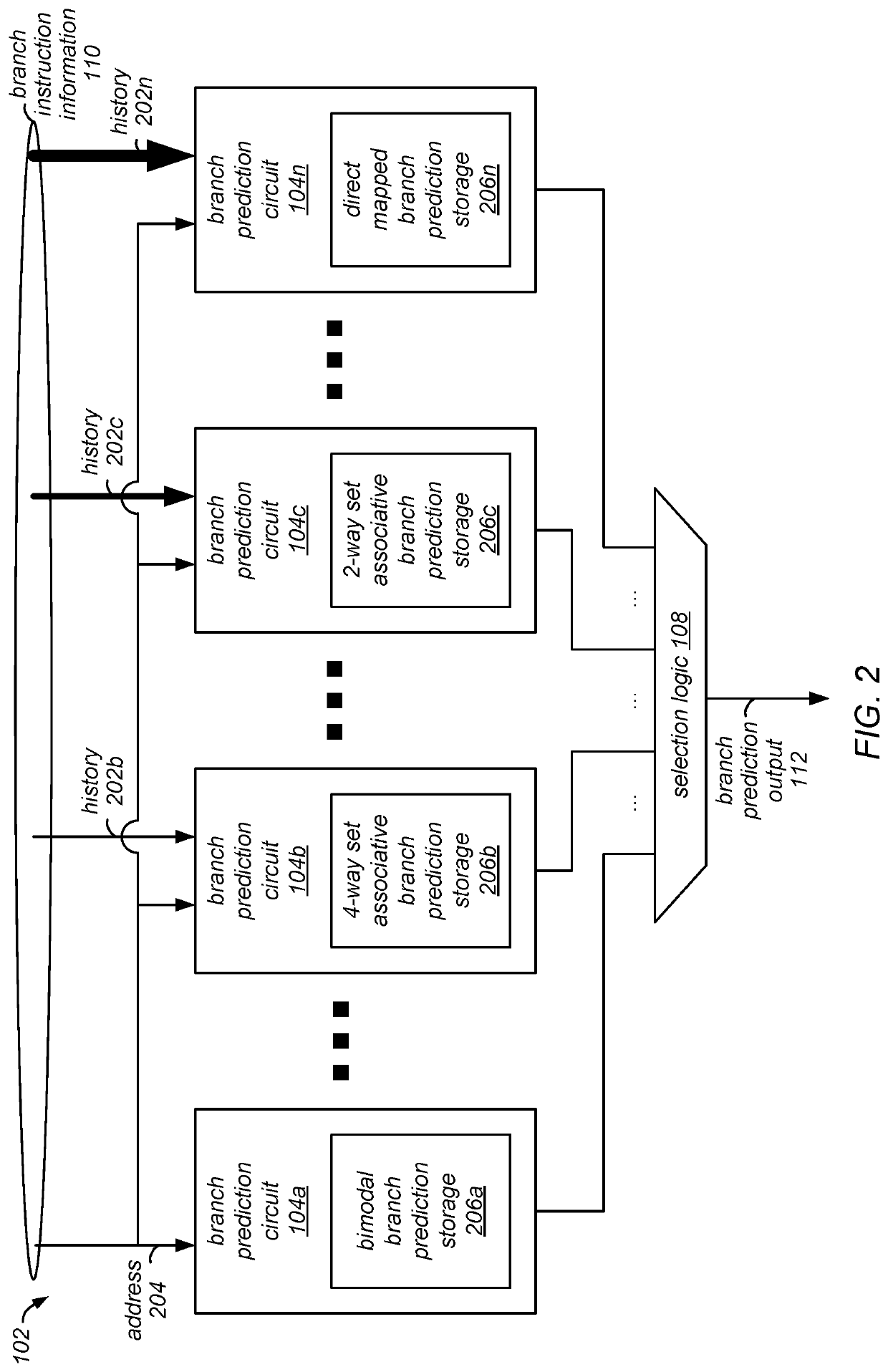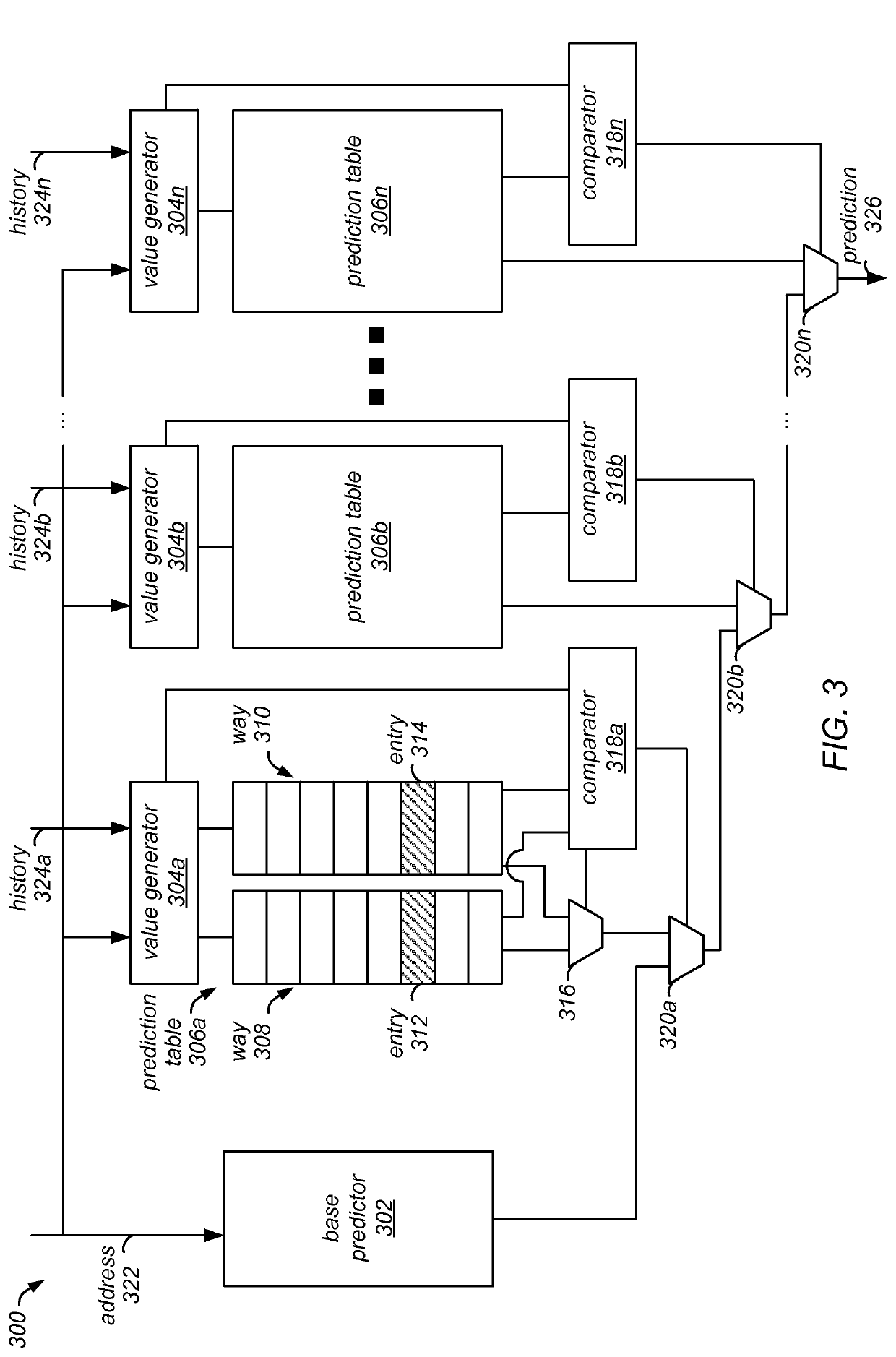Branch prediction system
a prediction system and branch technology, applied in concurrent instruction execution, instruments, computing, etc., can solve the problems of wasting processor power, wasting execution time of the processor, and wasting performance and power of the processor, so as to reduce the probability of multiple branch instructions mapping, increase the area of storage elements, and improve the effect of area efficiency
- Summary
- Abstract
- Description
- Claims
- Application Information
AI Technical Summary
Benefits of technology
Problems solved by technology
Method used
Image
Examples
Embodiment Construction
[0019]As described above, a branch prediction system may predict an outcome (e.g., a direction or a target address) of a branch instruction based on stored branch prediction information. However, in some cases, a direct mapped storage element of the branch prediction unit may map multiple sets of branch prediction information of multiple branch instructions to a single storage location. Mapping multiple sets of branch prediction information to a single storage location may result in the direct mapped storage element failing to store branch prediction information of at least some branch instructions, which may result in misprediction of future executions of such instructions. As will be discussed below, in some embodiments, a branch prediction system including at least some set associative entries may provide additional correct branch predictions for a program which includes branch instructions, as compared to a branch prediction system that includes no set associative entries. Some ...
PUM
 Login to View More
Login to View More Abstract
Description
Claims
Application Information
 Login to View More
Login to View More - R&D
- Intellectual Property
- Life Sciences
- Materials
- Tech Scout
- Unparalleled Data Quality
- Higher Quality Content
- 60% Fewer Hallucinations
Browse by: Latest US Patents, China's latest patents, Technical Efficacy Thesaurus, Application Domain, Technology Topic, Popular Technical Reports.
© 2025 PatSnap. All rights reserved.Legal|Privacy policy|Modern Slavery Act Transparency Statement|Sitemap|About US| Contact US: help@patsnap.com



